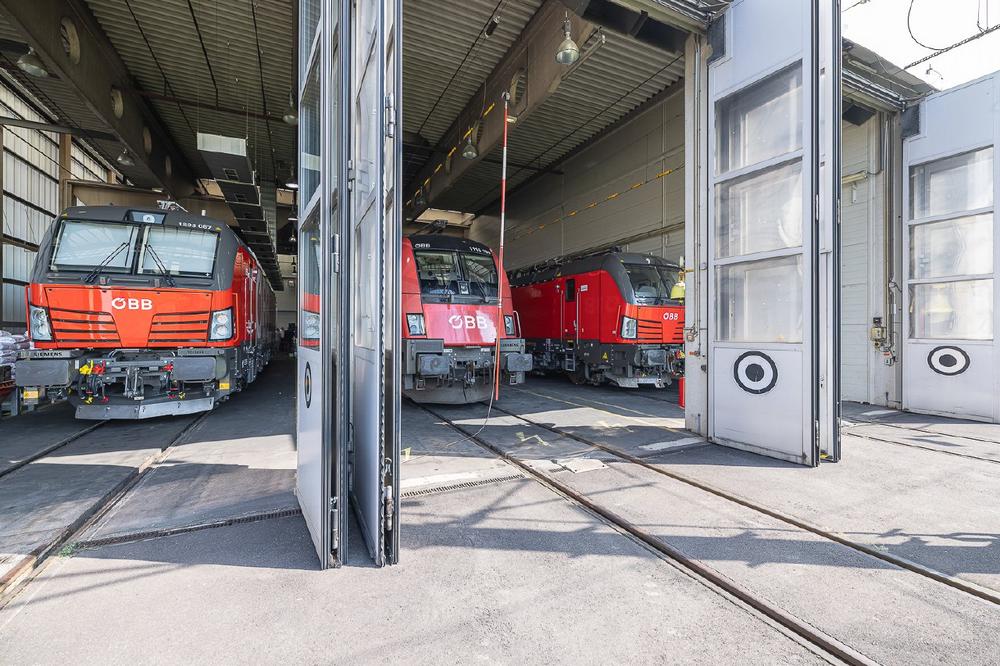Siemens Mobility and ÖBB digitize Austria’s rail network

Breaking News:
Kathmandu Nepal
Mittwoch, Dez. 24, 2025

Siemens Mobility and ÖBB (Austrian Federal Railways) are digitizing the Austrian rail network to further enhance the attractiveness of public transport. ÖBB is aiming to double the capacity of Austria’s entire rail system by 2040 to cope with increasing passenger numbers. This goal is now a bit closer: The most modern technology for railway operations – the digital European Train Control System (ETCS) – has now been implemented and commissioned on the 57-kilometer route between Linz and Vöcklabruck. The system controls distances between trains, as well as their direction and speed in real time. This enables the route to carry more passengers and freight, and ensures that the trains run more reliably, punctually, and safely.
Framework agreement for further rail network expansion
At a press conference held in Linz today, Siemens Mobility and ÖBB-Infrastruktur AG presented a framework agreement for a long-term cooperation and announced the successful commissioning of a first route section. The agreement regulates the expansion of the ETCS Level 2 system throughout Austria’s high-level rail network, the establishment of so-called ETCS Radio Block Centers or RBCs, which will be redundant, and the maintenance and servicing of these facilities. During the project’s rollout, plans call for installing a total of 21 RBCs by 2038 to provide fail-safe coverage for Austria’s high-level rail network.
ETCS Level 2 operation began at the start of August on the Linz–Wels–Vöcklabruck and Wels–Haiding line sections, marking the first commissioning based on the new framework agreement. The ETCS Radio Block Center covering this section is located in Vienna, and trains operating on the route are digitally monitored and controlled in Linz.
Dipl.-Ing. Dr. Johann Pluy, CEO of ÖBB-Infrastruktur AG: “Efficient railway infrastructure is critically important for achieving Austria’s climate goals. To help us handle the expected increase in rail traffic and shift away from roads, we are relying extensively on digital initiatives, and ETCS Level 2 is an enormously important component for railways of the future. The framework agreement signed with Siemens Mobility is based on a Europe-wide tender and we’re looking forward now to working with the best bidder to equip further rail routes with Level 2.”
Andre Rodenbeck, CEO Rail Infrastructure at Siemens Mobility:
“We are proud to be working with ÖBB to equip the Austrian rail network with ETCS Level 2, and the commissioning of this route marks an important milestone in ÖBB’s continuing expansion of ETCS coverage. The use of ETCS Radio Block Centers and our innovative software-based DS3 safety platform will significantly increase route capacity and make the Austrian railway system one of the most modern in the world.”
More is possible with ETCS
With ETCS Level 2, data is transmitted from the ETCS Radio Block Center to trains via GSM-R train radio. Data balises in the tracks are used to determine a train’s position and relay unalterable route data. The corresponding interlocking transmits track vacancy data and other information to the RBC. The RBC then generates the driving permit and sends it to the train. This continuous bidirectional flow of data considerably increases the line throughput. Driving trains with this “electronic vision” through several track blocks allows shorter headways at maximum speeds.
ETCS thus provides the basis for autonomous driving at optimum speed. This, in turn, saves energy and protects the environment. Without ETCS, long distances must be maintained between trains because of their lengthy braking distances. Thanks to precise high-tech tracking of the trains and mobile communications, ETCS reduces headways, allowing more passengers and freight to be transported in a shorter time.
These advantages can already be seen on railway lines equipped with ETCS, such as the Vienna–Breclav, Vienna–St. Pölten or Kufstein–Brenner routes. The system is being continuously expanded, with the goal of equipping all Austrian high-level and main lines with modern ETCS Level 2. ÖBB-Infrastruktur AG will invest €200 million in the train control system by 2026, and a total of around €900 million has been earmarked in the framework agreement for ETCS and train controls. As a standard throughout Europe, ETCS will also make cross-border travel much easier, and journeys to international destinations will be more comfortable and shorter. A significant innovation in the framework agreement is the use of the DS3 platform, which has been employed successfully since November 2020 in a pilot project for the interlocking at the Achau railway station in Lower Austria. Thanks to this digitization, ÖBB achieves significantly higher cost-effectiveness through lower investment and maintenance costs.
DS3 platform: Foundation for cloud-based signaling technology
DS3 stands for “Distributed Smart Safe System” and is the new software platform from Siemens Mobility for safety-relevant logic. The platform is used to migrate existing applications such as ETCS or interlockings to a standard high-performance platform based on COTS, which uses multicore technology and a new communication concept for a fully IP-based system architecture. DS3 will enable ETCS control centers to be further optimized and given greater flexibility.
Along with the coupling computer already running on the DS3 platform, which is the link to the interlockings, the ÖBB and Siemens Mobility partnership will also employ DS3 in all of the RBCs.
solutions for more than 175 years, Siemens Mobility is constantly innovating its portfolio. Its core areas include rolling stock, rail automation and electrification, a comprehensive software portfolio, turnkey systems as well as related services. With digital products and solutions, Siemens Mobility is enabling mobility operators worldwide to make infrastructure intelligent, increase value sustainably over the entire lifecycle, enhance passenger experience and guarantee availability. In fiscal year 2022, which ended on September 30, 2022, Siemens Mobility posted revenue of €9.7 billion and had around 38,200 employees worldwide. Further information is available at: www.siemens.com/mobility.
Siemens Mobility GmbH
Otto-Hahn-Ring 6
81739 München-Perlach
Telefon: +49 (89) 38035491
https://www.siemens.de/mobility
![]()